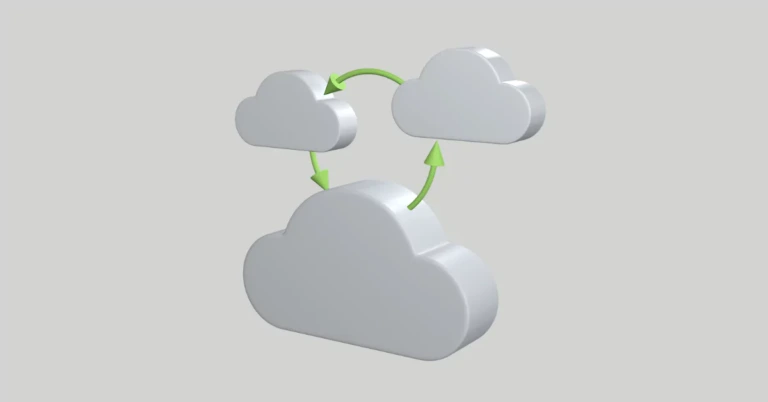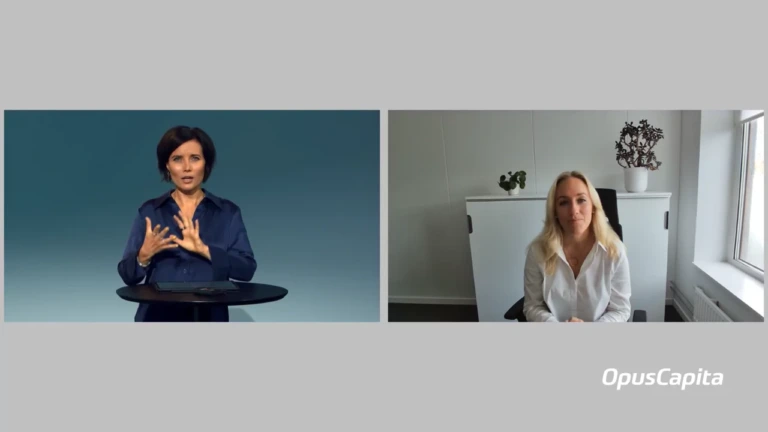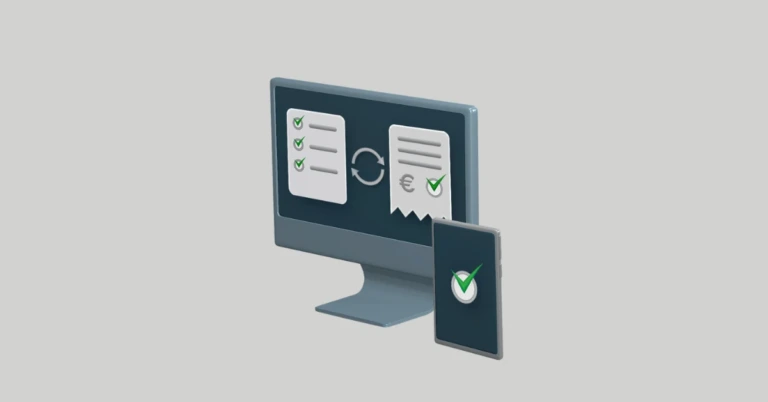
6 good reasons to invest in electronic procurement right now
Digital transformation is the talk of the town, or should we say industry. Left and right you read about it, and you hear that if you ignore it your business is inadvertently doomed to fail. Let’s look beyond the impending doom and gloom in those statements and find out why you should to invest in electronic procurement right now.
It’s true that there is no way to avoid digitalization. It has gained full momentum and will continue to do so. And that is, in fact, a good thing. Digitalization is nothing like the looming dark cloud it may sometimes seem like. Small steps are often enough to help companies to create a sound basis for the digital age.
The purchase-to-pay process, with electronic procurement as a core element, is one of the building blocks for such a sound basis. It is always worthwhile to put electronic procurement on top of the list of priorities for digital transformation and to start by looking at supplier relationships, supply chain digitization, ordering and procurement process automation, and timely transparency on spending.
Read on to find out more about six reasons that may make for a convincing business case or project proposal to push the digitalization of your procurement processes.
Quick return on investment
According to this year’s ProcureCon Europe study, 36% of the managers responsible for procurement believe that an immediate return on investment is crucial to tip the decision in favor of electronic purchasing. In practice, electronic procurement really does bring about a faster return on investment when compared to traditional ways such as investing in modernizing machinery or expanding manufacturing equipment. The operational and monetary effects of procurement digitalization and automation not only lead to a faster amortization of costs at an early stage but also provide far more transparency for the whole process.
Noticeable reductions in costs
Costs are clearly a decisive factor in ROI calculations, both from a process perspective and regarding procurement expenses. Practical experience has shown that an electronic procurement solution already shows impactful cost reductions within a time frame of six to eight months. Let’s let the numbers talk and see what this cost reduction would mean for a company with 200,000 order processes per year. We can estimate annual savings of five percent on purchase prices as a result of introducing automation and standardization and optimized supplier management based on a catalog system. The German Association for Supply Chain Management, Procurement, and Logistics (Bundesverband Materialwirtschaft, Einkauf und Logistik e.V. / BME) even assumes that the figures can add up to six to eight percent (a Hackett Group report from 2014 puts best in class at 9% savings). These estimations and a realistic coverage rate for catalog-based products and services allow you to evaluate how much you can decrease your company’s procurement expenses with a reliable e-procurement solution.
Less maverick buying
Lower purchase prices already make a difference but alone they are not enough to support your argument for electronic procurement. However, you may attract your superior’s attention with a term that originally describes a lone wolf but unfortunately also a common form of employee purchase behavior: maverick. Maverick buying is a term that describes when an individual makes purchases independently without following standard purchasing processes.
This maverick buying results in significantly higher costs because the purchase is done outside of existing contracts, agreed-on prices, and payment terms. Reasons for maverick buying typically relate to a difficult or slow purchasing process or missing products/services. Regardless of the explanation, experts find that it increases purchase costs by up to 15%. This figure varies between companies of course but it becomes evident that we are not talking about a small increase let alone any potential legal implications.
Finding ways and processes to limit maverick buying can save up to several million euros. It’s important to take into account, however, that not all non-PO-based purchase invoices can be attributed to maverick buying. A lot of categories are procured via special procurement channels, with experts estimating their average share to equal up to 40%.
Where companies succeed in increasing the number of controlled purchases, the effect is quickly noticeable in the form of lower costs and increased added value.
But how can you determine how much maverick buying is happening in your company? One way to find out is to look at the cash-out rate. The cash-out rate indicates the share of procurement expenses controlled by the purchasing department in the total credit-side financial volume. The remaining part then is the purchases via specific channels, as well as the more or less uncontrolled purchasing including free text orders. The more you can lower this share within e-procurement, the more positive your CEO’s attitude towards your electronic purchasing initiative will be.
More streamlined processes
Faster ROI, lower purchase prices, less maverick buying – you now already have a few key points that support your case for digitizing your procurement process. One more is missing, though, and that is the effect of electronic procurement on the overall procurement processes. Let’s take a short step back and look at what e-procurement actually means. E-procurement is the electronic creation and validation of orders, while automatically exchanging purchase documents with suppliers. And all of that process happens following workflow-controlled approval procedures. In other words, e-procurement is the end of cost-consuming manual processes. Simply put, electronic procurement provides a faster, more transparent system for purchasing and makes sure a set process is followed.
E-procurement allows you to decrease your process time, stay compliant with given processes, make fewer mistakes and take advantage of rebates and discounts which will, in turn, improve your relationship with your suppliers. Moreover, e-procurement allows you to bundle requirements and avoid redundancies which will reduce your vendors and make your process much more straightforward, efficient and better. In fact, every single electronically controlled procurement process increases the added value and with it the ROI, every day, with every order, and cent by cent. And that’s not even all, e-procurement releases workload from the purchasing department and enables them to spend their time tackling tasks with higher added value such as tactical procurement. And here we come full circle because this provides additional resources to further optimize by negotiating lower purchase prices and leading to higher productivity in purchasing.
How can you support this with figures? Again the Association for Supply Chain Management, Procurement, and Logistics (Bundesverband Materialwirtschaft, Einkauf und Logistik e.V.) provides us with insightful data. It has conducted a study showing that the introduction of an e-procurement solution with a catalog system will lower the process costs in purchasing by an average of 30%. Tapping into this potential, however, requires the courage and the willingness to leave well-trodden paths and embrace new technologies, methods, and procedures. If there’s a lack of willingness to do so, even a reasonable business case or project proposal will risk failure. In other words, if you wish to keep the old structures and processes and just use new technology, you will fail.
Enhanced control and compliance
Another advantage of electronic purchasing is the enhanced monitoring capabilities and the ingrained adherence to compliance rules. Compared to paper-based procurement processes, digitalization and automation not only provide for faster but also more transparent processes. Consequently, you literally have it at your fingertips to track procurement costs virtually in real-time. In addition to that, advanced procurement solutions can adapt to the specific purchasing guidelines and rules of your company. Neither you nor the controller should, therefore, be worried about compliance.
As simple as Amazon
Last but not least, the factor “easy and comfortable” should not be forgotten when it comes to evaluating the idea to move toward an electronic procurement solution. E-procurement opens up the perspective to create a procurement environment in which everybody in the company, with the needed rights, of course, can purchase any product required from a list of contract partners. This happens in the same easy way we are already used to from the likes of Amazon and eBay. Although the solutions reflecting the ‘Amazonization’ of electronic purchasing in the B2B sector already exist, German companies are still quite far away from digitizing their procurement environments. OpusCapita, however, can be described as a trendsetter in this context.
Conclusion:
If you want to find a business case for investment in e-procurement – the business case is almost certainly there if you look. The six areas listed above are great places to start but there are more and for sure, different types of businesses in different industries will have their own key challenges and goals – and these should be reflected in your own unique business case too.
Don’t feel you have to do all the work on your own, work with someone who knows just exactly what you are about to embark upon. Work with us. OpusCapita has over 8000 customers and has (almost as a rule) built a business case with each one in order to justify the final investment decision. This is what we do, we’re good at it and happy to start a conversation.







